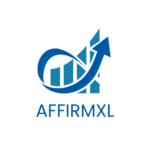Cost accounting is a crucial aspect of financial management that helps businesses make informed decisions. I’ve found that understanding its fundamentals can significantly impact a company’s profitability and operational efficiency. The Lanen Fundamentals Of Cost Accounting PDF is a valuable resource for anyone looking to dive deep into this essential field.
In this article, I’ll explore the key concepts presented in the PDF, highlighting how they can be applied in real-world scenarios. Whether you’re a student, a professional, or just someone interested in enhancing your financial knowledge, grasping these fundamentals will equip you with the tools to analyze costs effectively and drive better business outcomes. Let’s uncover the insights that can transform your approach to cost accounting.
Key Takeaways
Understanding Cost Accounting: Grasping the fundamentals of cost accounting is essential for businesses to improve profitability and operational efficiency.
Key Concepts: The Lanen Fundamentals Of Cost Accounting PDF covers critical principles, including cost behavior, budgeting, and variance analysis, which are vital for informed financial decision-making.
Cost Types: Familiarize yourself with fixed, variable, and mixed costs to better analyze cost structures and predict cost fluctuations based on production levels.
Budgeting Importance: Effective budgeting is crucial for resource allocation and financial planning, featuring components like sales and production budgets.
Variance Analysis: Understanding the differences between budgeted and actual performance helps in identifying areas for improvement and facilitates proactive management.
User Experience: The PDF is designed for easy navigation and accessibility, with supportive supplementary materials enhancing the learning experience for users across various devices.
Lanen Fundamentals Of Cost Accounting PDF
The Lanen Fundamentals Of Cost Accounting PDF serves as a comprehensive guide to cost accounting principles and practices. This resource emphasizes key concepts essential for understanding cost behavior, cost analysis, and cost allocation. It breaks down the methodologies used in determining product costs and introduces various costing systems, including job order costing and process costing.
The content logically explains the flow of costs in production and how these costs influence financial reporting. Additionally, the PDF highlights the role of fixed and variable costs in decision-making processes, providing practical examples to illustrate these concepts.
Readers gain insights into budgeting processes, variance analysis, and performance measurement techniques. Each section emphasizes real-world applications, making complex topics easier to navigate. Overall, the “”Lanen Fundamentals of Cost Accounting”” PDF equips users with essential knowledge to analyze cost implications and improve organizational efficiency.
Key Concepts In Cost Accounting
Cost accounting encompasses various principles fundamental to understanding how costs affect business operations. Key concepts include cost behavior, cost analysis, budgeting, and variance analysis.
Cost Behavior and Cost Analysis
Cost behavior refers to how costs change in response to production levels. Understanding this allows me to predict how costs will fluctuate with different activities. There are three main types of costs:
- Fixed Costs: These remain constant regardless of production levels, such as rent and salaries.
- Variable Costs: These change directly with production volume, like materials and labor costs.
- Mixed Costs: These contain both fixed and variable components, often seen in utilities.
Analyzing these costs helps identify relevant insights for decision-making processes. Cost analysis involves examining cost structures to determine product pricing, cost control methods, and profitability. Tools such as break-even analysis can assess how many units must be sold to cover costs.
Budgeting and Variance Analysis
Budgeting plays a critical role in financial planning, allowing businesses to allocate resources effectively. A well-prepared budget serves as a financial roadmap, guiding operational and strategic decisions. Key components of budgeting include:
- Sales Budget: Projects future sales and sets revenue targets.
- Production Budget: Defines the number of units to produce based on sales forecasts.
- Operating Budget: Estimations of operating expenses, including fixed and variable costs.
Variance analysis measures the differences between budgeted and actual performance. This analysis identifies discrepancies, enabling proactive management and adjustments. Variances can be classified as:
- Favorable Variances: Actual performance exceeds budgeted expectations, indicating better-than-expected outcomes.
- Unfavorable Variances: Actual performance falls short of budgeted expectations, signaling areas that require attention.
Using these concepts from the Lanen Fundamentals Of Cost Accounting PDF equips me with the tools necessary to enhance financial oversight and drive improved performance within organizations.
Structure of Lanen Fundamentals Of Cost Accounting PDF
The “”Lanen Fundamentals of Cost Accounting”” PDF presents a structured approach to understanding cost accounting concepts. Each section builds on the previous one, making it easy to grasp essential principles.
Chapter Breakdown
- Introduction to Cost Accounting: This chapter sets the stage, defining cost accounting and its significance in financial reporting. It introduces fundamental terms and concepts.
- Cost Behavior: This section explores how costs react to changes in production levels. It categorizes costs into fixed, variable, and mixed types, providing insights into their implications for business decisions.
- Cost Analysis Techniques: This chapter details various methods for analyzing costs, including break-even analysis and contribution margin analysis. These tools help determine profitability and guide pricing strategies.
- Budgeting Fundamentals: This portion focuses on the creation and management of budgets, discussing types such as operational and capital budgets. It emphasizes the importance of budgeting in achieving financial goals.
- Cost Allocation Methods: This chapter explains techniques for distributing costs to specific products or services. Understanding these methods is crucial for accurate financial reporting and performance measurement.
- Variance Analysis: This section examines the discrepancies between budgeted and actual results, helping identify areas needing improvement. It discusses standard costing and flexible budgeting as key tools in variance analysis.
- Performance Measurement: This final chapter covers metrics and techniques for evaluating organizational efficiency. It emphasizes how cost accounting informs performance improvement initiatives.
Supplementary Materials
The PDF includes various supplementary resources to enhance understanding. These resources feature:
- Case Studies: Real-world examples illustrating cost accounting applications in diverse industries. These case studies deepen readers’ comprehension of theoretical concepts.
- Practice Problems: Exercises designed to reinforce learned principles, providing hands-on experience with cost accounting methods.
- Glossary of Terms: A comprehensive glossary defines key terminology, serving as a quick reference for important concepts.
- References: A list of scholarly articles and books for further reading, supporting continued exploration of cost accounting principles.
These supplementary materials complement the main content and facilitate a more enriching learning experience.
User Experience and Accessibility
User experience plays a crucial role in engaging with the “”Lanen Fundamentals of Cost Accounting”” PDF. The layout is intuitive, ensuring easy navigation through chapters and concepts. Users can find information quickly thanks to a clear table of contents, which highlights key sections of the document.
Accessibility is prioritized within the PDF. Text is presented in a legible font size, accommodating readers with varying visual abilities. Additionally, diagrams and charts included throughout enhance comprehension of complex ideas, catering to visual learners. Alt text descriptions for images promote inclusivity, allowing screen reader users to access all content.
Hyperlinks embedded within the PDF direct users to relevant external resources. These resources provide deeper insights or supplementary information, further enriching the learning experience. Bookmark features enable quick reference to important sections, enhancing usability during study sessions.
The document supports various devices, ensuring users can access material on computers, tablets, or smartphones. Responsiveness allows for seamless reading regardless of screen size. Overall, the design and functionality of the “”Lanen Fundamentals of Cost Accounting”” PDF create an effective learning environment that facilitates understanding of cost accounting principles.
Effective Financial Management
Exploring the “”Lanen Fundamentals of Cost Accounting”” PDF has been an enlightening journey. This resource not only clarifies complex concepts but also provides practical tools for effective financial management.
By mastering the principles outlined in lanen fundamentals of cost accounting pdf, I can make informed decisions that enhance profitability and operational efficiency. The structured approach and user-friendly design make it accessible for anyone looking to deepen their understanding of cost accounting.
Whether you’re a student or a professional, diving into these fundamentals can significantly impact your financial acumen and overall business strategy. I’m excited to apply these insights to real-world scenarios and improve my financial decision-making skills.



